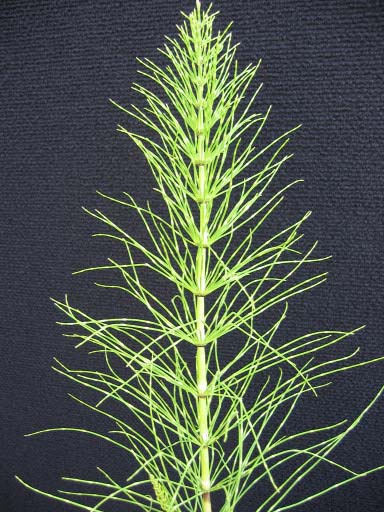
Beautiful…but annoying 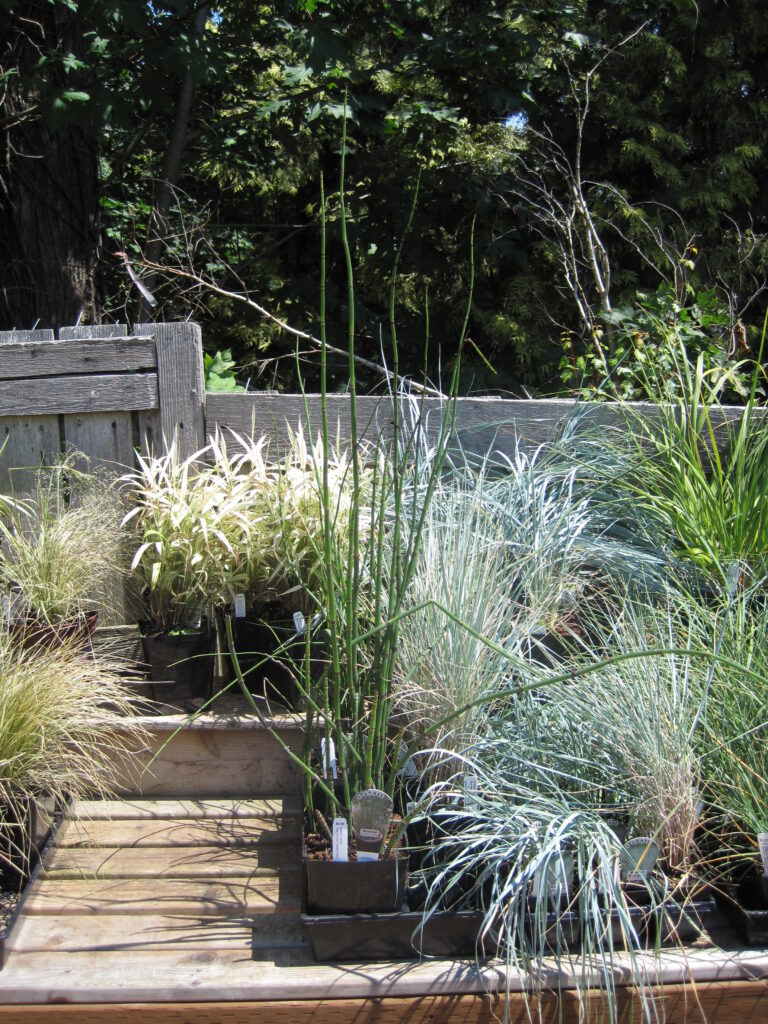
If you don’t have horsetail problems, you can buy some!
One of the most annoying weeds in garden and landscape beds is horsetail (Equisetum spp.), a genus native throughout North America and most of the rest of the world. They have survived since prehistoric times because they are highly adaptable to their environments and are almost impossible to eradicate. There is great debate among gardeners on whether to pull or cut horsetail. Online you can find statements such as this: “…each time you break the stem, little portions under the soil regenerate new plants. Essentially, you will be creating more horsetail.” This and many other websites recommend cutting instead.
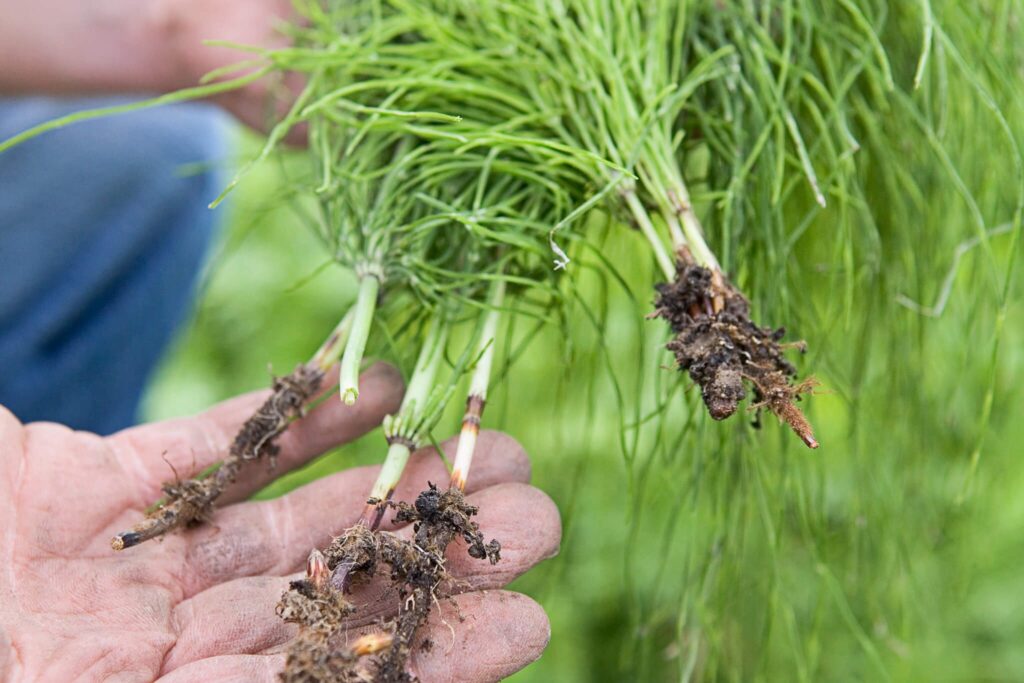
Pull horsetail shoots. Mowing just makes them mad. Photo courtesy BBC Gardening World. 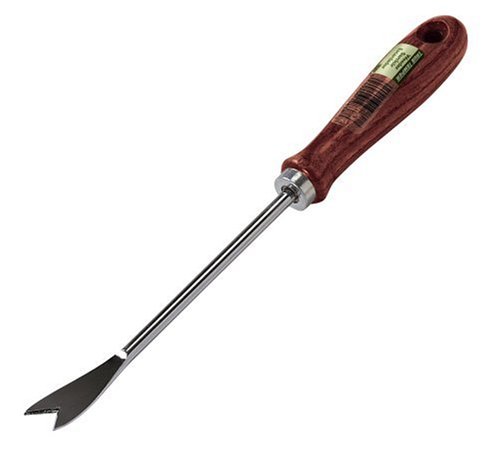
Forked weeders are excellent for removing weeds below the root crown.
Unfortunately, this is bad advice. The trick to eradicating any perennial weed without chemicals (or at least bringing them to manageable levels) is to starve them to death. Plants depend on their roots (and rhizomes in the case of horsetail) to survive, so anything that reduces root resources is going to eventually kill the plant. Obviously the more above-ground material you can remove, the less photosynthesis occurs and fewer resources are transported to the roots. Pulling weeds, especially if done with a forked weeder (also used in this post), is going to remove far more material than simply cutting weeds off at the surface.

Once you start a weed removal project, you have to keep after it: once is not enough. There will be rhizomes or roots left underground to support new stem growth, and once they reach the soil surface they will start producing resources to send to the roots. “Constant vigilance” is needed to keep these shoots in check. You can significantly reduce the repeated pulling by adding a thick layer of arborist wood chips to the newly weeded site. This forces the roots to put even more resources into stem growth to reach sunlight, meaning fewer weeds and more successful, desirable plants.
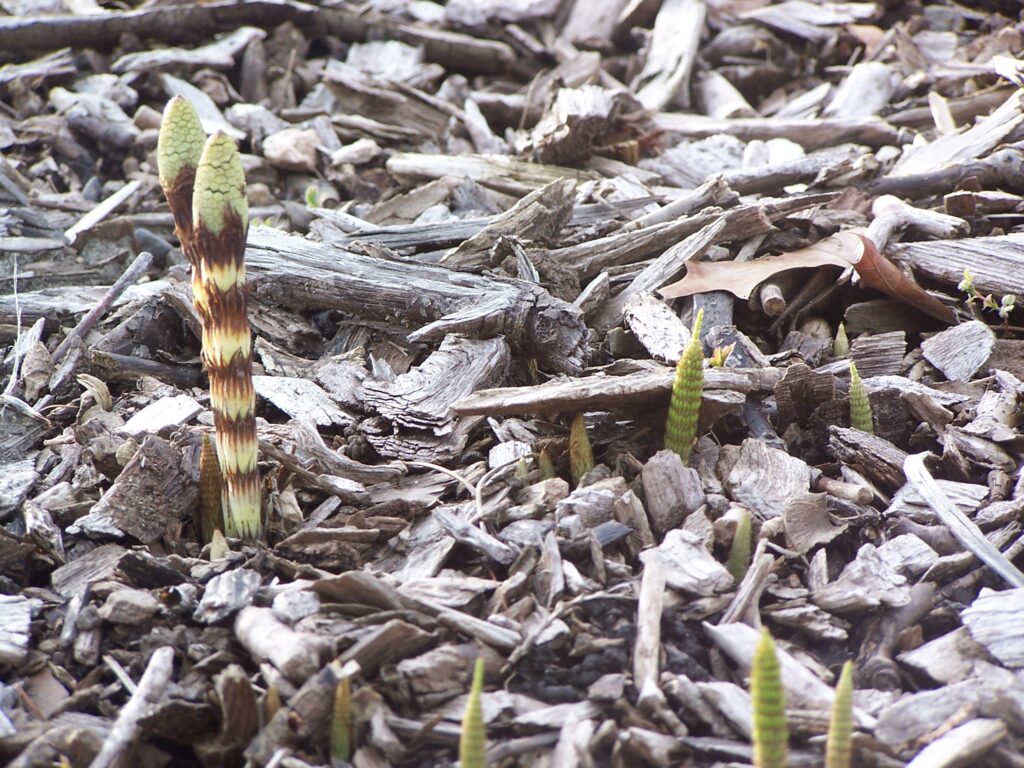
There is one caveat for controlling any weed that spreads underground. If you can’t control the spread from adjacent properties, you will not be able to eradicate the problem. In such cases, you may want to install a root barrier along the edges of your gardens. You simply dig a trench and install the barrier of your choice, making sure there are no gaps between the sections. Treated timbers, concrete pavers, and other materials that are slow to degrade can be used. The depth is going to depend on your soil conditions and the weeds of interest; some preliminary digging to determine the depth where you find weedy rhizomes and roots will help. Keep in mind that root barriers will also interfere with the root spread of your desirable plants.
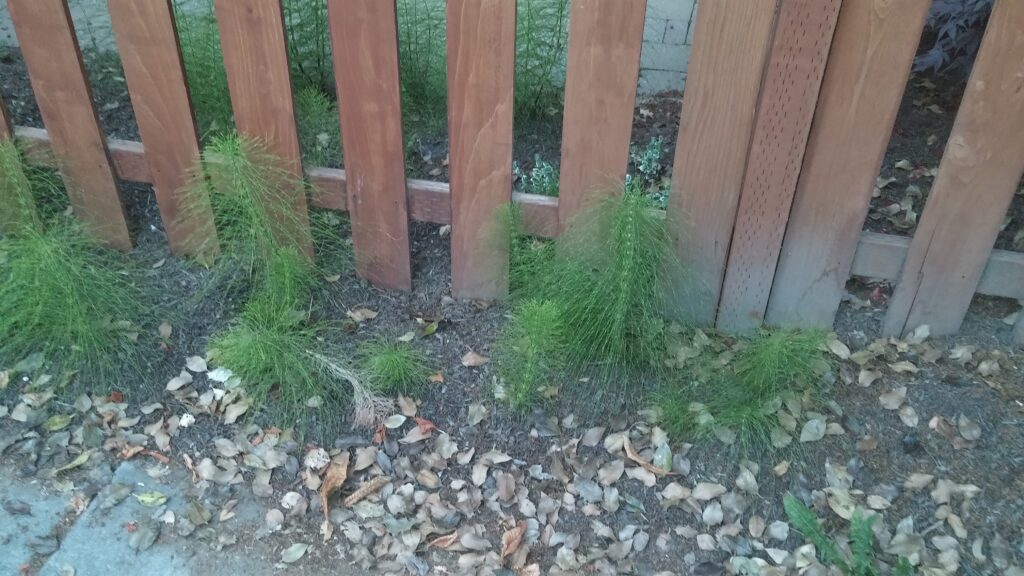
If root barriers are not an option, the other method you can try is to densely plant low shrubs and perennials along the property line to create a competitive line of defense. The roots will compete for space, water, nutrients, and oxygen; the crowns will create a shaded environment where invading stems struggle for space and sunlight. You will still have to watch for invaders, but the amount of weeding needed will be far less than it was before. And don’t forget the mulch, both for the benefit of your barrier plants and to force invaders to use more resources to get their stems to the surface.
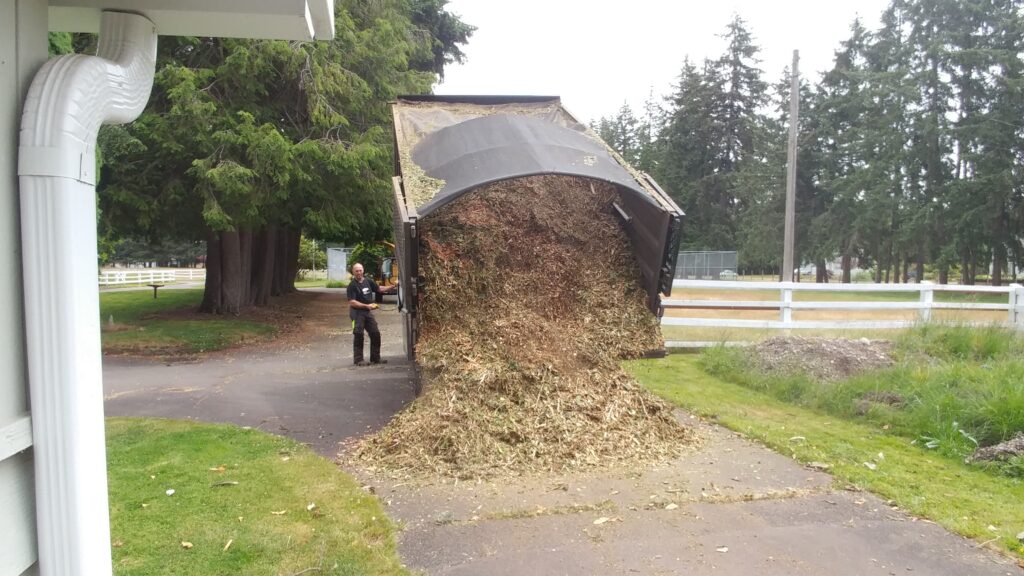
Fresh is best! 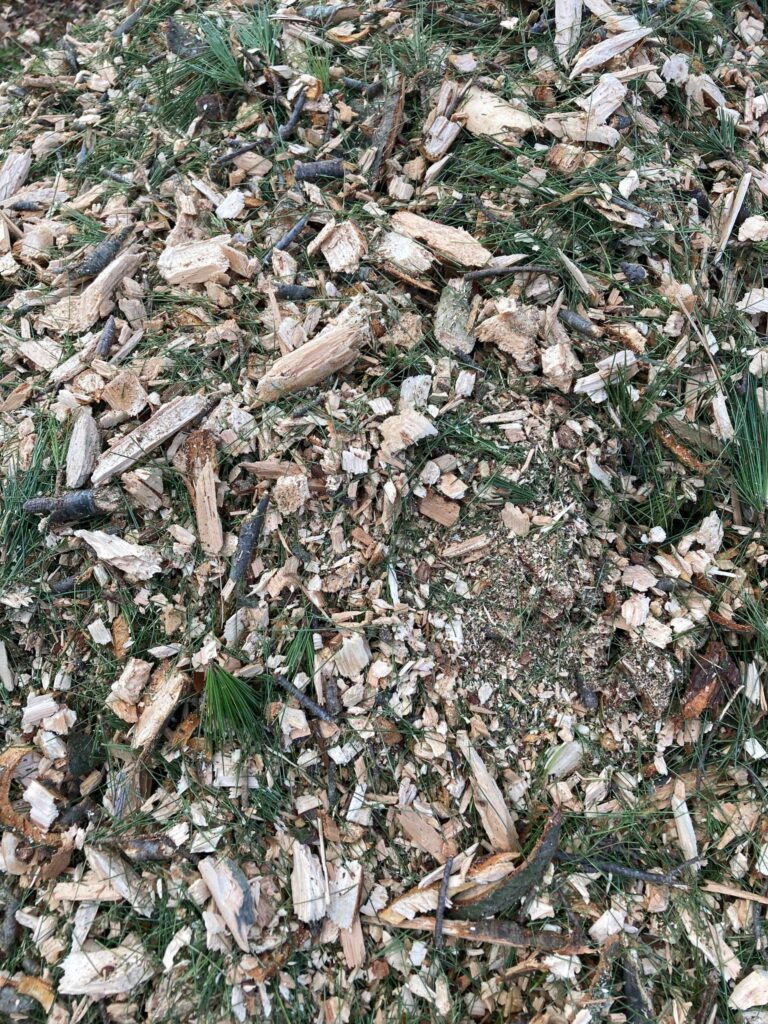
Up close and personal
This method works for ALL plants – not just horsetail. (Plant physiology is funny that way.) Bindweed, English ivy, Himalayan blackberry, and Canada thistle are all weeds that I have personally controlled through physical removal and deep mulching with arborist wood chips. If you’ve had success with this method on another aggressive weedy plant, be sure to post a comment!

I followed your recommendations when I decided to reclaim a older garden overrun with blackberries, nettle, thistles, and vinca 3 years ago. Scraped off all the vegetation, laid 10-12″ of wood chips as the “floor”, installed raised steel beds and no regrowth at all! Thank you!
While my nemesis wasn’t horesetail, it did take me no less than three gardening seasons to manually eradicate bishops weed /gout weed / snow-on-the-mountain /whatever you call this nasty, vigorous groundcover that I hate with just as much vigor as it grows. Ugh.
8th summer at this place and I still periodically have to pull the random stray here and there.
The fun part was discovering all the other plants that had been supressed or hidden over time by the icky stuff. I seriously thought I would have to start planting the affected beds from scratch, but all sorts of lovely plants popped up the year after most of it was removed! Lucky me!
I have horsetail from neighbors, too much to block – 200+ ft- so I have been fighting it for years. I put chips down in front of bed and that helps. I have access to sawdust, going to try that too as chips are hard to come by.
Last year I was too busy to deal with it, but all the desirable plants seemed to thrive among the horsetail. I didn’t water at all. In fact, I wonder if it’s actually beneficial to plants? Thank you for settling the pulling v cutting debate!
Horsetail has no “companion” planting aspects to it.
Sawdust will pack and form an impenetrable barrier. It’s particles are too small to be used alone and should be mixed with coarser material.
..wondering how deep the wood chips would need to be, say to kill off grass around an apple tree..and would that be too deep for the apple tree’s good…wouldn’t mulch against trunk of course..
Hi Robert –
Our research shows that 12″ is ideal. It does not harm the trees but actually enhances their growth.
Great article!!! Thank you
Hi there Linda: I’m a board member of the Sunshine Coast Botanical Garden. We have a small quarterly publication we circulate to our membership. I would like to reprint this article. I would like to know if I have permission to reprint. Thanks for sharing your amazing knowledge with the world.
Please do! Good to hear from the SCBG – I’ve enjoyed my visits there.
If you can put a link to the blog site in your publication, that would be great.
I love horsetail and do not see it as a weed or a must ger rid of or to watch.. I believe we should be using it extensively to smother out dog strangling vine is found or periwinkle or gout weed, not to mention Phragmites the evil grass that smothers plants and animals.
“Weed” is a human construct – it’s a plant where it’s not wanted. So you can certainly use horsetail in your garden, but other gardeners might want other plants.
Will gorilla mulch have the same weed mitigation results as wood chips? I really like the look of that type of mulch
No, gorilla mulch is bark mulch. It doesn’t absorb water well and provides no benefit to beneficial soil microbes.
Nothing really replaces arborist wood chips. The next best thing would be playground chips or hog fuel.